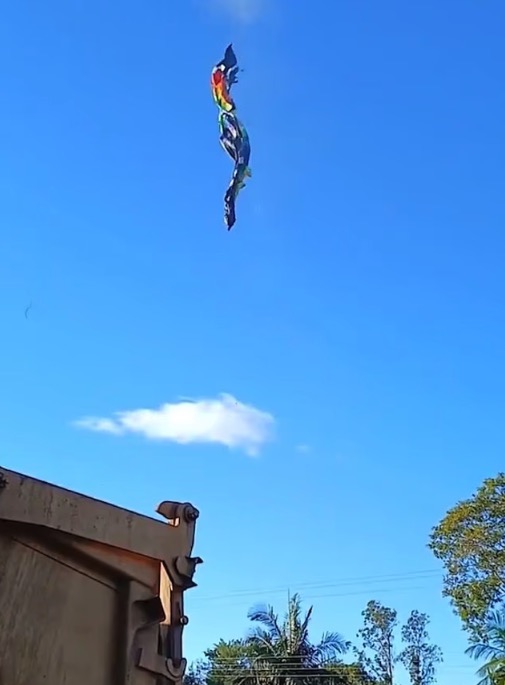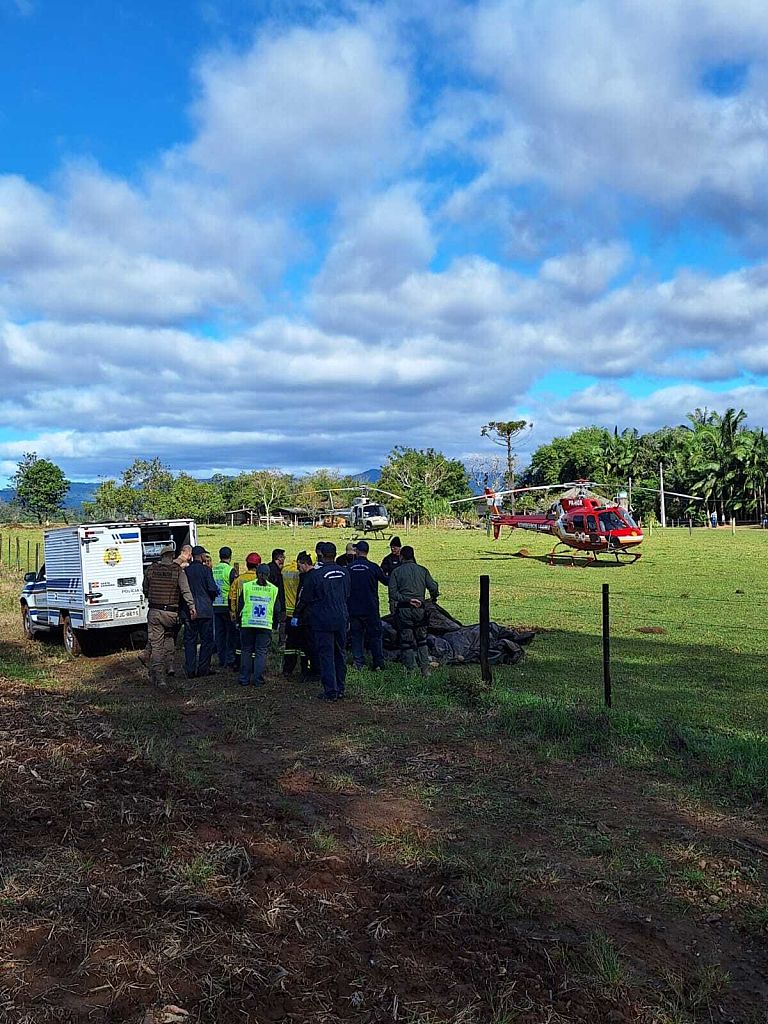A peaceful morning flight ended in a catastrophic disaster on Saturday as a hot air balloon went up in flames and crashed in southern Brazil, resulting in the deaths of eight people and injuries to thirteen others. The horrifying accident occurred in Praia Grande, located in the Santa Catarina state—an area well-known for its scenic hot air balloon rides.
A Morning Ride Turns Fatal in Praia Grande
The incident unfolded on June 21 when a commercial hot air balloon, operated by the tourism company Sobrevoar Serviços Turísticos, was carrying 21 individuals over the picturesque landscapes of southern Brazil. The flight, initially meant to offer breathtaking aerial views of the lush forests and fields, turned tragic when a fire ignited mid-air inside the basket of the balloon.

Eyewitness footage and survivor testimonies reveal terrifying scenes as flames rapidly engulfed the basket, leading to panic among those on board. According to initial reports, the balloon began descending quickly after the fire broke out, only to rise again after several passengers jumped to safety—lightening the load and unintentionally allowing the balloon to ascend once more before ultimately falling.
Heroic Efforts and Split-Second Decisions
According to law enforcement authorities and survivors, the pilot acted swiftly after detecting the fire. Officer Tiago Luiz Lemos reported that the pilot instructed passengers to jump as the balloon neared the ground. “The fire broke out inside the basket,” Lemos told local media. “When the balloon was close enough to the ground, the pilot told people to jump.”
Thirteen passengers, including the pilot, managed to leap out in time and survived the ordeal. Tragically, the balloon—now lighter—rose again with eight passengers still on board. Soon after, the structure lost lift and crashed violently, with the fire spreading rapidly despite flame-resistant materials being used in its construction.
Investigating the Cause: Burner Malfunction Suspected
While the investigation remains ongoing, early statements suggest that the cause of the blaze might have been a backup burner stored inside the basket. The pilot testified that the device could have reignited spontaneously.

“I’m not certain if it stayed on or reignited by itself, but the backup torch seems to be the source of the fire,” the pilot reportedly told local outlet Jornal Razao.
Additional factors may have contributed to the accident. Ulisses Gabriel, the civil police chief leading the investigation, noted that strong wind conditions during takeoff complicated the launch. Ground crews had to use cables to stabilize the balloon, and at one point, a truck was seen maneuvering the balloon using a tether, which may have caused a gas line rupture leading to the fire.
Gabriel stated: “The truck was pulling the balloon back and forth. This movement could have created a gas leak, which possibly ignited the flames.”
Victims Identified Among the Dead
Authorities have released some information regarding the deceased. Among the eight victims were two couples, a mother and daughter, a professional figure skater, and a practicing ophthalmologist. Some of the victims were reportedly found clutching one another in their final moments—a testament to the panic and heartbreak experienced during the disaster.
“The scene was heartbreaking,” Gabriel shared on X (formerly Twitter). “The pain is unimaginable.”
Eyewitnesses described disturbing visuals, with one local saying they saw two burning bodies fall from the sky. Another individual who arrived at the crash site recounted: “There was a woman in shock, covered in mud, and a man who was limping. The balloon had landed deeper in the forest, completely engulfed in flames.”
Emergency Response and Public Reaction
Rescue teams arrived swiftly and worked to contain the blaze while warning civilians to maintain a safe distance due to the risk of further explosions. Smoke continued to rise from the wreckage for hours after the impact.

The hot air balloon trip had been marketed as a 45-minute journey reaching up to 1,000 meters in altitude. Each participant reportedly paid around 550 Brazilian reais (approximately $100 USD) for the experience.
Mourning and Political Response
Santa Catarina’s Governor, Jorginho Mello, who was on a diplomatic visit to China at the time, announced a period of official mourning. In a video statement, he expressed condolences to the victims’ families and assured that the incident would be thoroughly investigated.
President Luiz Inácio Lula da Silva also commented, pledging federal support to the affected families and local authorities. Praia Grande’s city government extended similar support, offering services and condolences to the grieving community.
Suspension of Operations and Industry Scrutiny
In response to the incident, Sobrevoar Serviços Turísticos immediately halted all operations. In a statement, the company expressed deep sorrow: “Despite all necessary precautions and the professionalism of our experienced pilot, we now face the devastating consequences of this tragedy.”
Brazil’s National Civil Aviation Agency (ANAC) has initiated a formal investigation into the accident. According to Santa Catarina’s Public Safety Secretary, findings are expected within 30 days. All surviving passengers and crew members, including the pilot, are being interviewed as part of the inquiry.
This incident comes just weeks after another balloon accident in São Paulo, where a 27-year-old woman lost her life and 11 others were injured. The back-to-back tragedies are raising serious concerns about balloon safety regulations in Brazil, prompting calls for stricter oversight and better safety protocols.
Final Thoughts
The devastating crash in Praia Grande has sent shockwaves across Brazil, especially within the ballooning community. What began as a serene adventure turned into a national tragedy, highlighting the risks associated with aerial tourism.
As investigations continue, the nation mourns the lives lost and prays for those recovering from physical and emotional wounds. This tragic event underscores the importance of rigorous safety measures in the tourism industry—especially in high-risk activities such as hot air ballooning.


